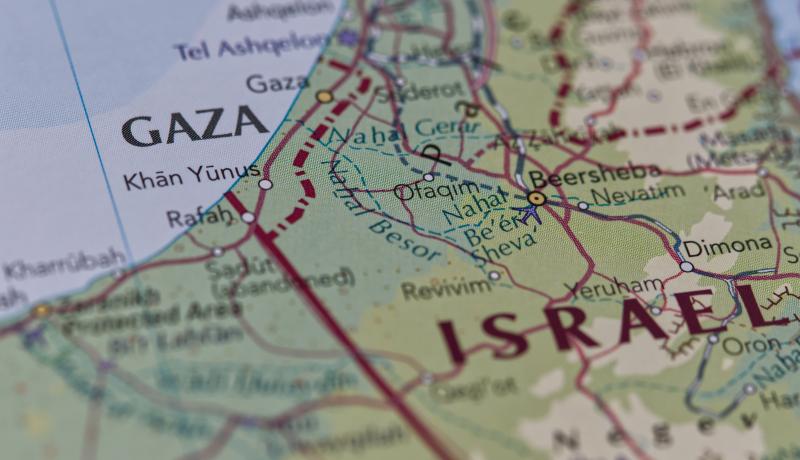Q&A: Examining The Israel-Hamas Conflict

On Oct. 7, 2023, the Palestinian militant group Hamas—which has been designated as a terrorist organization by the United States and European Union—fired rockets into Israeli towns and invaded Israeli territory, killing more than 1,400 people and taking nearly 200 hostages. The attack, which CNN called “unprecedented,” was the deadliest attack on Israel in decades.
In response, the Israeli government declared war on Hamas and proceeded to drop 6,000 bombs on Palestinian territory between Oct. 7 and 12. Israel has cut off supply of water and electricity to the Gaza Strip, vowing to “annihilate” Hamas. Additionally, the Israeli government has told more than 1 million Palestinians to evacuate from their homes in Northern Gaza as Israel’s attacks on Hamas’ area of control intensify.
More than 2,700 Palestinians have died amid Israel’s airstrikes, according to the Palestinian health ministry.
On Sunday, U.S. President Joe Biden told CBS’ “60 Minutes” that Israel occupying Gaza would be a “big mistake” as the Israeli government has been signaling it is preparing for a ground invasion.
The DU Newsroom spoke with Micheline Ishay, a professor in the Korbel School of International Studies and the new director of DU’s Center for Middle East Studies, about the conflict.
Could you explain the powers at play here? Who are the main actors in the conflict and why has the fighting broken out now?
The main protagonists of this conflict, at least so far, are Hamas and Israel. Hamas relies on support from Iran. Hezbollah, an Islamist Party which is the dominant political and military power in Lebanon (and a proxy of Iran) has joined the attack by shelling northern Israel, but the sporadic exchanges of fire there have not amounted to a second front in the war. Israel and Egypt have sealed their borders with Gaza, and there appears to be little risk of further incursions from Gaza into Israel.
A longstanding possible cause of the attack is the longstanding Israeli blockade of Gaza in absence of any Israeli interest in changing the status quo. A more immediate cause was the impending Saudi agreement to recognize Israel in exchange for U.S. security guarantees. That agreement, following the Abraham Peace Accord (which normalized Israel’s relations first with the United Arab Emirates and Bahrain and then with Morocco and Sudan), would have represented a broad Arab-Israeli coalition in opposition to Iran. The resulting fear of Iran, Hezbollah, and Hamas may be responsible for the timing of the attack by Hamas. The fact that the Palestinian question had been overlooked during the Abraham accords may also have proved to be explosive.
Please briefly outline some of the history between these two groups.
Israel was established in 1948 alongside a Palestinian state whose borders had been specified in a UN resolution. That partition was rejected by five Arab states that attacked Israel on the side of the Palestinians. Until 1982, Israel fought a succession of wars with Arab states and Palestinian organizations; thereafter, the conflict has mainly involved Israel and various Palestinian groups.
Initially, Hamas was an offshoot of the Muslim Brotherhood. Hamas became politically active soon after its founding, when it participated in the 1987 Palestinian Intifada (the first major Palestinian uprising). Its original charter called for the destruction of Israel, and a less bellicose 2017 revision continues to reject the legitimacy of the Jewish state. The new organization quickly acquired a broad following. Hamas, along with the Islamic Jihad group, launched a campaign using suicide bombers during the second Intifada of 2000-2005. In 2005, Israel ended its military occupation of Gaza and removed the 8,000 Israelis who had settled there.
Since 2006, Hamas has periodically launched thousands of missiles against Israel, provoking intense Israeli retaliation. Despite Israel’s policy of warning Gazan residents of impending attacks on buildings housing Hamas military outposts (using text messages and other means), thousands of innocents have been victims in the crossfire. This has greatly worsened the ongoing suffering resulting from the longstanding blockade of Gaza’s borders by Israel and Egypt, along with severe repression by Hamas’s theocratic regime.
What stance has the U.S. taken, and why does this matter?
In the short run, the U.S. has strongly supported Israel’s call for the destruction of Hamas’ military, while repeatedly cautioning Israel to honor the rules of war (i.e., to minimize Palestinian civilian casualties). That support has included deploying an aircraft carrier strike group to the Eastern Mediterranean as a deterrent to Hezbollah and Iran joining the war.
In the long run, the U.S. will need to learn from the mistakes of the Oslo Agreement and Camp David Peace II and provide stronger incentives for a long-term resolution to the Palestinian question. The stability of the region is a vital United States interest, as it seeks simultaneously to support Ukraine’s defense against the Russian invasion while containing Chinese expansionism in East Asia.
Why is this such a sensitive, complicated issue?
People on all sides should not be denied their basic universal human rights, a goal which strives to reconcile calls for national sovereignty with respect for individual and collective rights. The Israeli and Palestinian governments have hardened their positions since the Oslo Agreement, and many have come to believe that the impasse cannot be bridged.
For the Palestinians, tragic wars with their Israeli neighbor rekindle the collective historical trauma of Israel’s 1948 war of independence, which they call al-Nakba, or “the catastrophe.” The recent attack by Hamas and Israel’s unfolding retaliation is but the latest reminder, as it follows Israeli incursions into Gaza in 2006 and 2014. In all these episodes of tit-for-tat violence, Palestinian casualties have far exceeded Israeli losses. Throughout the Palestinian territories, dislocation, restricted movement, check points and random stops interrupt daily routines, providing a continual trauma.
And while the Nakba cannot be compared to the Jewish Holocaust—the ultimate rationale for the state of Israel—Palestinian life under occupation has become intolerable. For the Israelis, the latest slaughter of innocent Jews has revived memories of pogroms, genocide and regional wars, rekindling fears that hatred of the Jews will never end. A new narrative is desperately needed, as moderates on both sides are losing hope.
The conflict between Israel and Hamas has been ongoing for a long time without a resolution. In the end, does either side ever win or lose?
In the short run, the Israeli government will win this battle because of the asymmetrical power between Israel and Hamas; but in the long run, it may lose the war for Israeli democracy. After the 1967 Six-Day War, the Israeli philosopher Yeshayahu Leibowitz argued that ruling the Palestinians would “effect the liquidation of the state of Israel as the state of the Jewish people and bring about a catastrophe for the Jewish people as a whole.”
For everyone's sake, and particularly for Israelis and Palestinians, let us hope that there is enough creativity and will for this prophecy to be reversed.
The Korbel School will host a roundtable discussion about the events surrounding the Israel-Hamas war on Wednesday, Oct. 18. The panel will feature Ishay as well as Adam Rovner, director of DU's Center for Judaic Studies; Professor Ahmad Abdrabou; and former U.S. Ambassador Gary Grappo. For more information, visit the Eventbrite site here.



